Community model for tourism
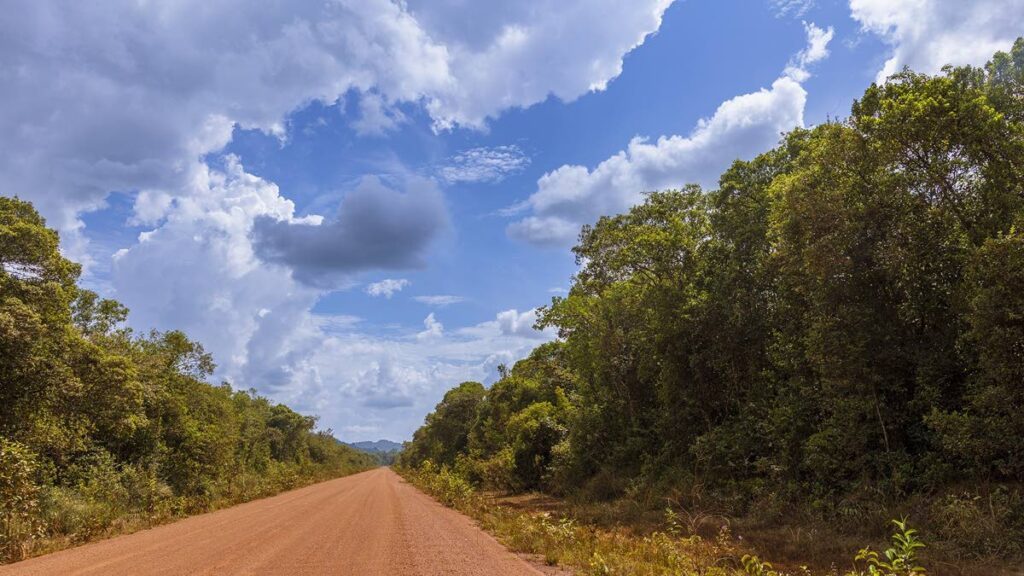
Joanne Husain goes to Guyana in search of wildlife and finds an oasis in the heart of the Upper Essequibo, where the Yupukari Village is reinventing how visitors interact with the land. The village is apprehensive about the current conflict over the region.
Caribbean tourism is estimated to be the single largest sector in terms of contribution to GDP, accounting for up to 80 per cent in some Caribbean countries and directly employing over one million workers throughout the region.
With only one per cent of the world’s population, the Caribbean attracts at minimum three per cent of global tourism arrivals and expenditure. Blue skies, white sands, and the bejewelled sea still prove irresistible to numerous visitors annually, but the tourism landscape is shifting.
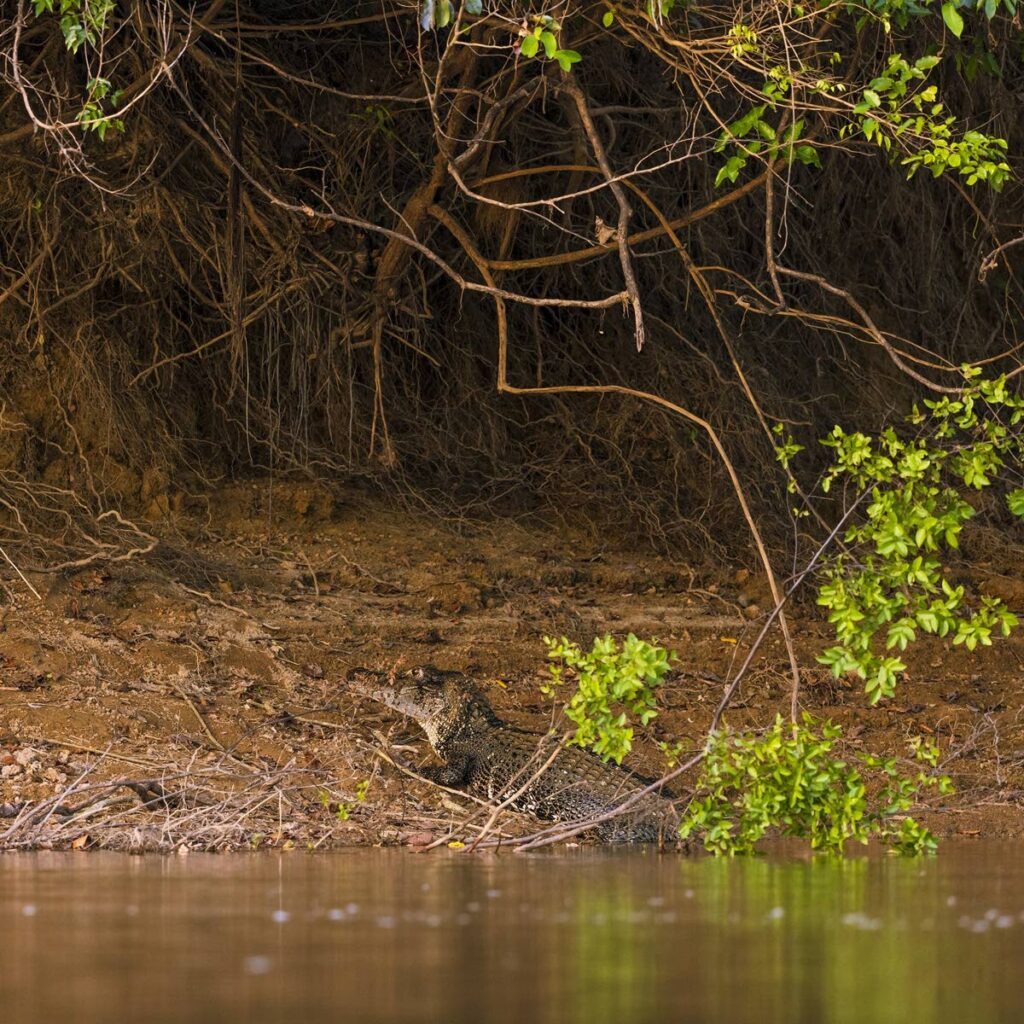
Communities rather than conglomerates are the new hosts. Community-based tourism (CBT) places the community at the centre of tourism planning, development and management. CBT aims to improve the residents’ quality of life by optimising local economic benefits, protecting the natural and cultural environments and providing high quality visitor experiences. (This is what has given Castara, Tobago, an edge for the decade before covid19.)
The Caribbean as a tourism destination may have been built by largely by foreign-owned, large-scale, all-inclusive beach resorts. This has posed challenges in balancing the economic benefits of tourism with the need for equity as well as environmental and cultural preservation.
Guyana, however, has embraced a sustainable paradigm with CBT at the forefront of tourism development. Geographically South American but historically and politically Caribbean, the country remains heavily forested and is one of the world’s last stands of wilderness. These characteristics are becoming increasingly desirable for today’s tourists who are searching for ethical, authentic, meaningful, and transformative travel experiences.
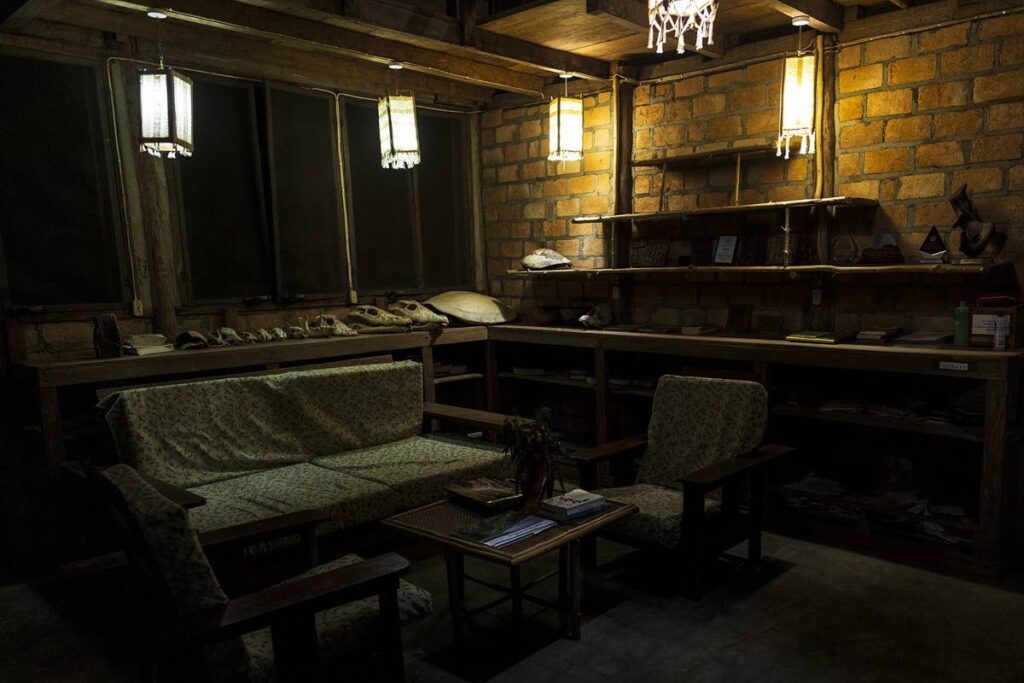
The Guyana Tourism Authority (GTA) has been actively encouraging CBT development particularly in rural and indigenous communities. Through the GTA’s support of CBT with tourism product development, training programmes and securing donors, Guyana has seen an increase in tourist arrivals alongside socio-economic benefits for traditionally marginalised communities – all in a place without any of the typical “sun, sea and sand.”
It is not surprising that Guyana offers a blueprint for the region in sustainable and community-owned and -led tourism.
Caiman House
In Guyana’s Region 9, within indigenous-controlled Yupukari village, is Caiman House, winner of the 2022 Caribbean Sustainable Travel Award.
Here, the accommodation is rustic and artisanal, but comfortable. Thatched roofs and wall panels of woven moriche palm merge seamlessly into the landscape and provide much-needed respite from the savanna heat. The fact that a hotel can exist in a place without being a beacon is testament to how we should be living: no grotesque advertisements, no billboards, no road signs, only nature.
Caiman House is completely off-grid, running on solar power and well-water and recently satellite internet.
Getting there on your own is near impossible, especially at night, as there are no lights. This underscores the need for a registered local guide – mandatory for all organised tours in Guyana.
The staff is friendly, the rooms are clean, and the meals are wholesome.
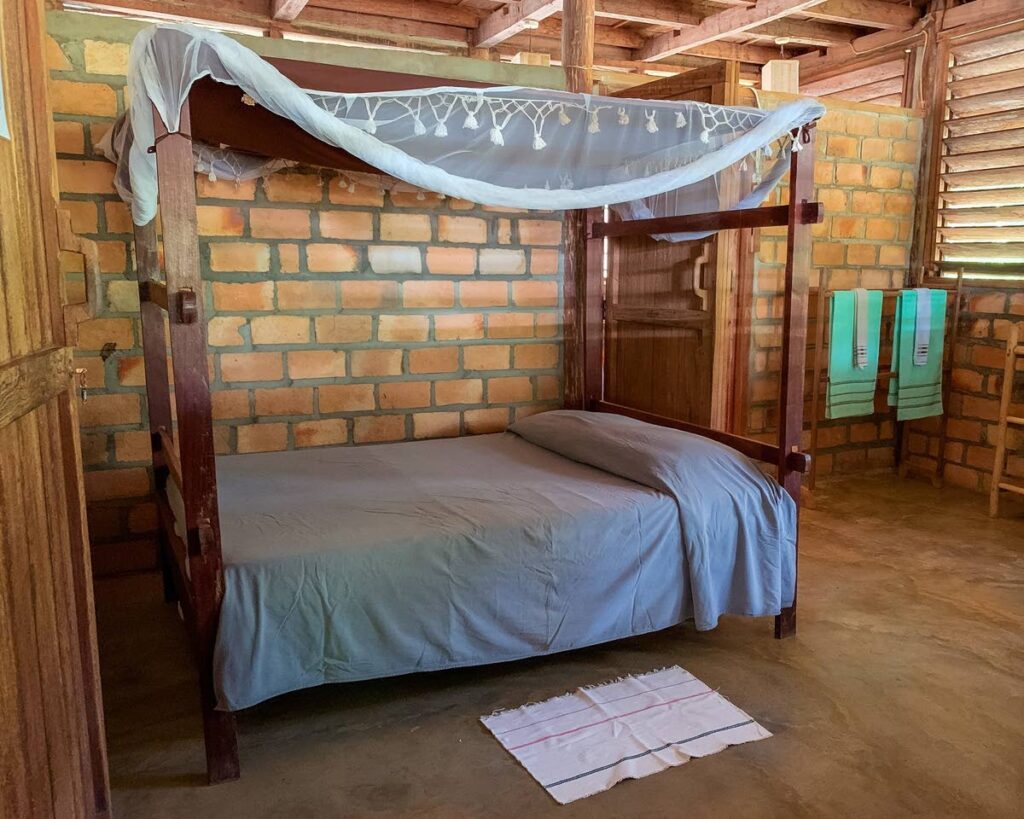
While the staff is predominantly female, the growth of CBT in rural villages like Yupukari has seen a marked decrease in the number of men migrating out of villages to find work elsewhere. Instead, they are being employed at the lodges or in ancillary establishments. Caiman House declares that 100 per cent of its income goes directly into the community. An on-site library established in 2005 fuelled an 86 per cent rise in the pass rate from primary to secondary school by 2019.
Community-owned and -operated nature-based tourism has additional benefits: the protection of wilderness areas. Caiman House is situated at a confluence of three habitat types – savanna, forest and river. Tourists are visiting to experience pristine nature, so it is good business sense to preserve as much of the wild as possible.
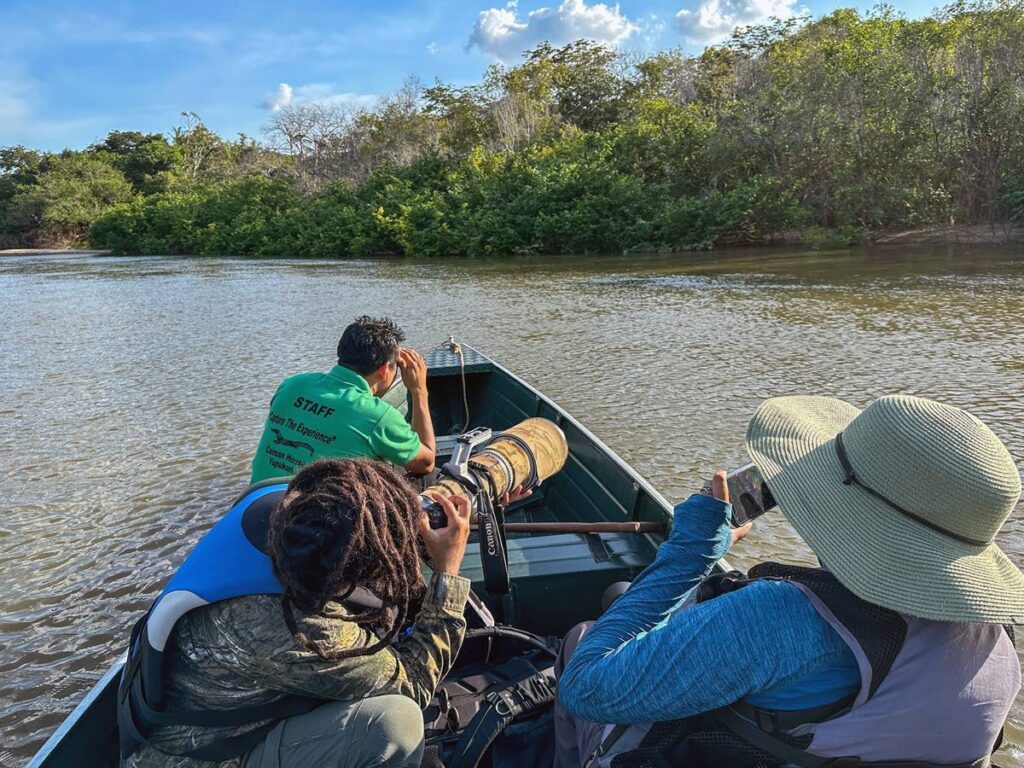
Caiman House hosts both community-led and academic-led research of local fauna; conservation and education programmes on species such as the black caiman and yellow-spotted Amazon River turtle.
Destructive activities such as logging, mining, and hunting are either prohibited entirely or restricted and strictly managed. The wildlife population remains healthy and prolific, with more frequent encounters.
Yupukari Public Lilbrary
Villagers in Yupukari are also working to preserve their native Macushi tongue, made possible by the presence of the lodge and the Yupukari Public Library. For example, there is an ongoing ethnobotany project to document local ecological knowledge of crops, cassava cultivation and fermentation, medicinal plants, and the use of plants in shamanic ritual through a published monograph in both English and Macushi.
While visitors may not learn to speak Macushi after a week, you can visit the onsite Wabbani craft shop and try traditional weaving techniques.
Visitors are wholeheartedly welcome to participate in everyday life in Yupukari’s Caiman House, sharing meals, stories and activity with the staff.
Alliance of Rural Communities
Here in TT, our land space is too small for any one village to be off-grid, but we are customising and implementing our unique version of CBT nevertheless.
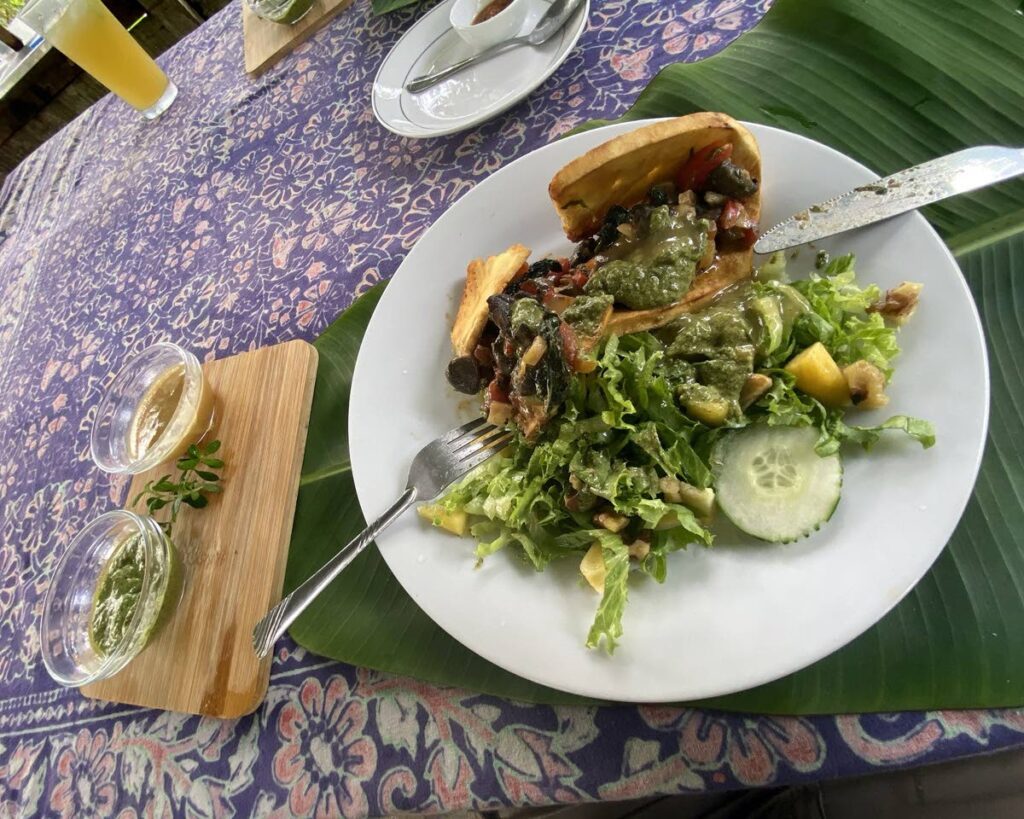
A number of villages in rural Trinidad have come together under the banner of the Alliance of Rural Communities. This network offers bird-watching and turtle-watching and cacao tours, as well as contributing directly to the scientific research efforts that are ongoing in the respective communities.
The Ministry of Tourism, Culture and the Arts has also recently launched CBT initiatives across TT, disseminating the CBT toolkit by the Caribbean Tourism Organization.
Furthermore, CBT is a very viable vehicle to achieve several of the UN Sustainable Development Goals, such as SDG 8– Decent Work and Economic Growth, SDG 11 –Sustainable Cities and Communities, and SDG 13 – Climate Action.
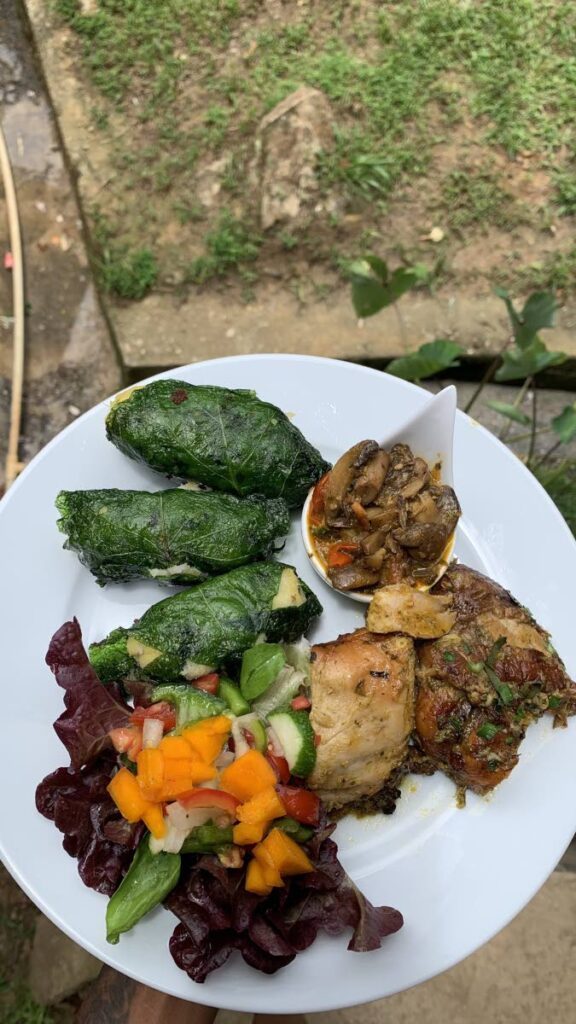
If we can adapt this model of tourism on a wider scale in this country as well as throughout the Caribbean, we can show that tourism – orchestrated in communities by communities – can benefit every person and every form of life.
The money stays in the region, communities are educated and self-sustaining. The alliance of people, wildlife and planet prospers.

Comments
"Community model for tourism"